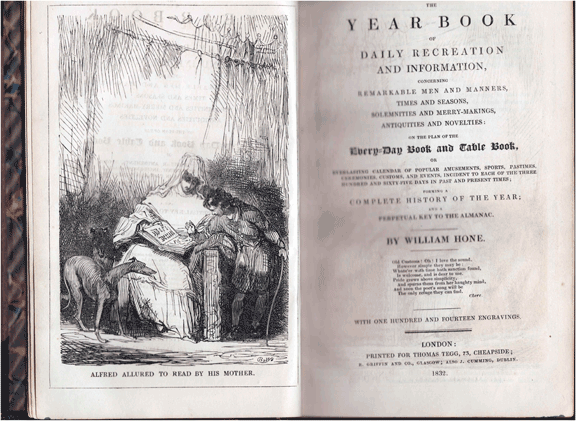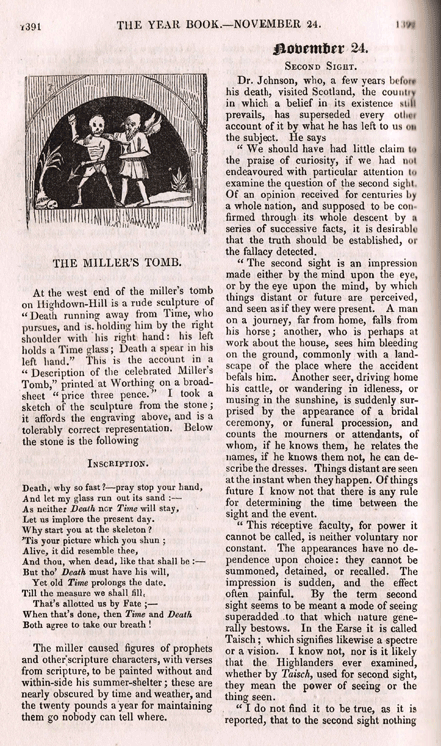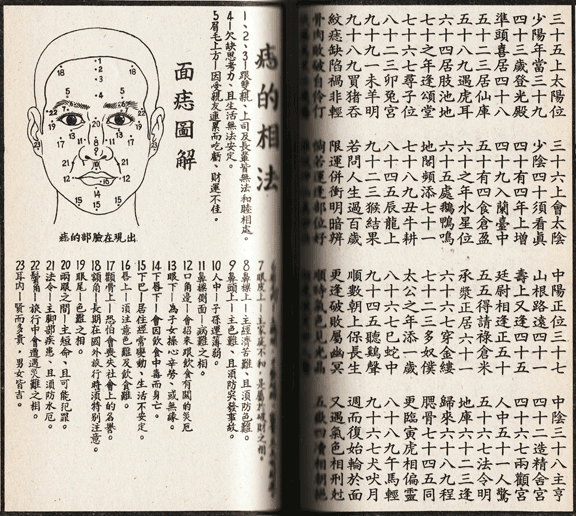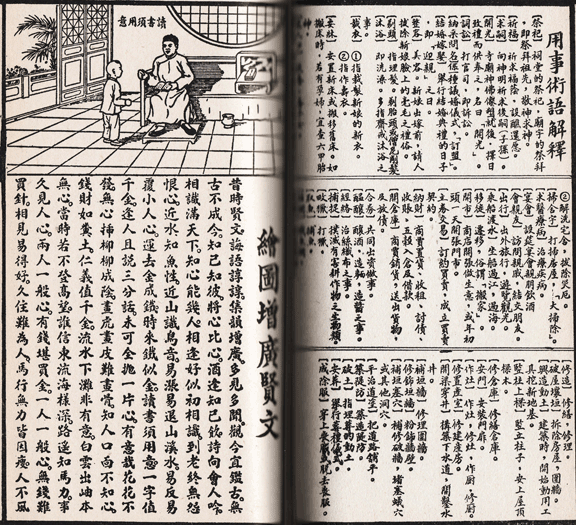The Almanac in the Modern Era
CASE 5: Popular Belief in Ancient China
An almanac is annual publication in which particular types of information are arranged according to the calendar. Almanacs provide information on astronomical phenomena like the times of the tides and the rising and setting of the sun and moon, and the dates of eclipses and solstices. They also predict weather patterns and the changes of the seasons, and this made them useful especially to farmers. Indeed one of the very first objects printed on a British North American press was an almanac for the year 1639. One of the most popular colonial almanacs was the Astronomical Diary and Almanack begun by Nathaniel Ames in 1725. It was the forerunner of the most famous American almanac, Benjamin Franklin’s Poor Richard’s Almanack (published in 1732–57), the title of which deliberately recalled one of the most popular and enduring of English almanacs, that of “Poor Robin” (founded in 1662). The most enduring of all American almanacs was The Farmer’s Almanac, first published in 1792 by Robert Bailey Thomas. Today it is called The Old Farmer’s Almanac.
A few years ago the Old Farmer’s Almanac 2002 by Robert B. Thomas was being sold around the pumpkin farms near Princeton, New Jersey. In it, you could discover that:
For planting, the most fertile signs are the three water signs: Cancer, Scorpion, and Pisces. Good second choices are Taurus, Virgo, and Capricorn. Weeding and plowing are best done when the Moon occupies the sign of Aries, Gemini, Leo, Sagittarius, or Aquarius. Insect pests can also be handled at these times … (p. 227)
This passage reveals two things of value for our understanding of the Daybook:
- Almanacs are not peculiar to China but occur in many societies, ancient and modern, “East and West”
- Almanacs are related to astrology.
In fact, most early almanacs were primarily devoted to astrology and predictions of the future. No doubt this was because predicting the positions of the stars and the tides and the course of the weather did not seem all that different from predicting a person’s future.
In the seventeenth and eighteenth centuries, the popular almanac developed into a full-blown form of folk literature that went far beyond the business of predicting fate. Attempting to appeal to a broader audience, these publications could include home medical advice, a variety of statistics, fiction and poetry, as well as information about the best times to plant or conduct other affairs. By the 19th century such books sometimes lacked any astrological information altogether. Hone’s Yearbook, published in London in 1832, is one example of this kind of spinoff.
For every day of the year it delivers information on major anniversaries or the lives of important historical figures. In addition, it provides amusing anecdotes, jokes, recipes, chess strategies, poems, and moral advice, but it avoids any reference to astrology.
Like traditional almanacs, it provides the time the sun rises and sets and information about seasonal developments that may be pertinent for that day, for example:
March 19. –Day breaks . . . 4 4
Sun rises . . . 6 0
Sets . . . 6 0
Twilight ends . . . 7 56
White violet in full flower.
Red butterfly appears.
It also provides detailed information about Christian holidays, saints’ days, Church rituals, and so on.
While Hone’s Yearbook doesn’t offer astrological advice, it does address the problem of predicting the future. As a product of the 19th century, however, Hone’s attempts to offer an ostensibly scientific account for how the future can be predicted, namely, a theory of “second sight” attributed to no less than the famous Dr. Johnson:
“The second sight, is an impression made by the mind upon the eye, or by the eye upon the mind, by which things distant or future are perceived, and seen as if they were present.”
This theory makes no assumptions about spiritual agency, but rather seems to situate the faculty to predict the future in the human mind. Though this theory would hardly pass for science today, at the time no doubt it sounded more rational than those astrological predictions the book so carefully avoids.
The Chinese Almanac in the Modern Era
As in Europe the almanac in China evolved so as to appeal to a wider range of needs and thus a wider market. Indeed the genre of “how-to” books began to diversify from about the 12th century on, following the spread of printing in the 11th century. Some publications were essentially handbooks on how to run a home and contained little or no astrological information, but almanacs proper continued to be produced. By modern times almanacs could offer a rich variety of materials. In addition to advice on seasonal changes and calendars, almanacs might provide information on such topics as Chinese medicine, famous people in history, how to read different calligraphic styles, or important festivals.
This traditional type of almanac remains in use today. Like Hone’s Yearbook, these Chinese almanacs also provide moral guidance. The page illustrated here, for instance, shows a father delivering wise advice to a son. “Never drink except with your closest friends,” it counsels.
Of course when we drink we may say things we wouldn’t want everyone to hear. If we’re with close friends it doesn’t really matter much, but if not, one’s glib confession of the moment might become cause for regret. This kind of advice also provides a way of avoiding future calamity, one that makes no assumptions about spiritual agency. The potential cause of disaster is human nature and the remedy is the virtue of prudence. An English translation of this modern Chinese almanac was published by Shambala Press in 1986. Check out the text of a father’s advice.
[missing image here]
Martin Palmer, ed., T’ung shu: the Ancient Chinese Almanac (Boston: Shambala Press, 1986), 158 – 159).







